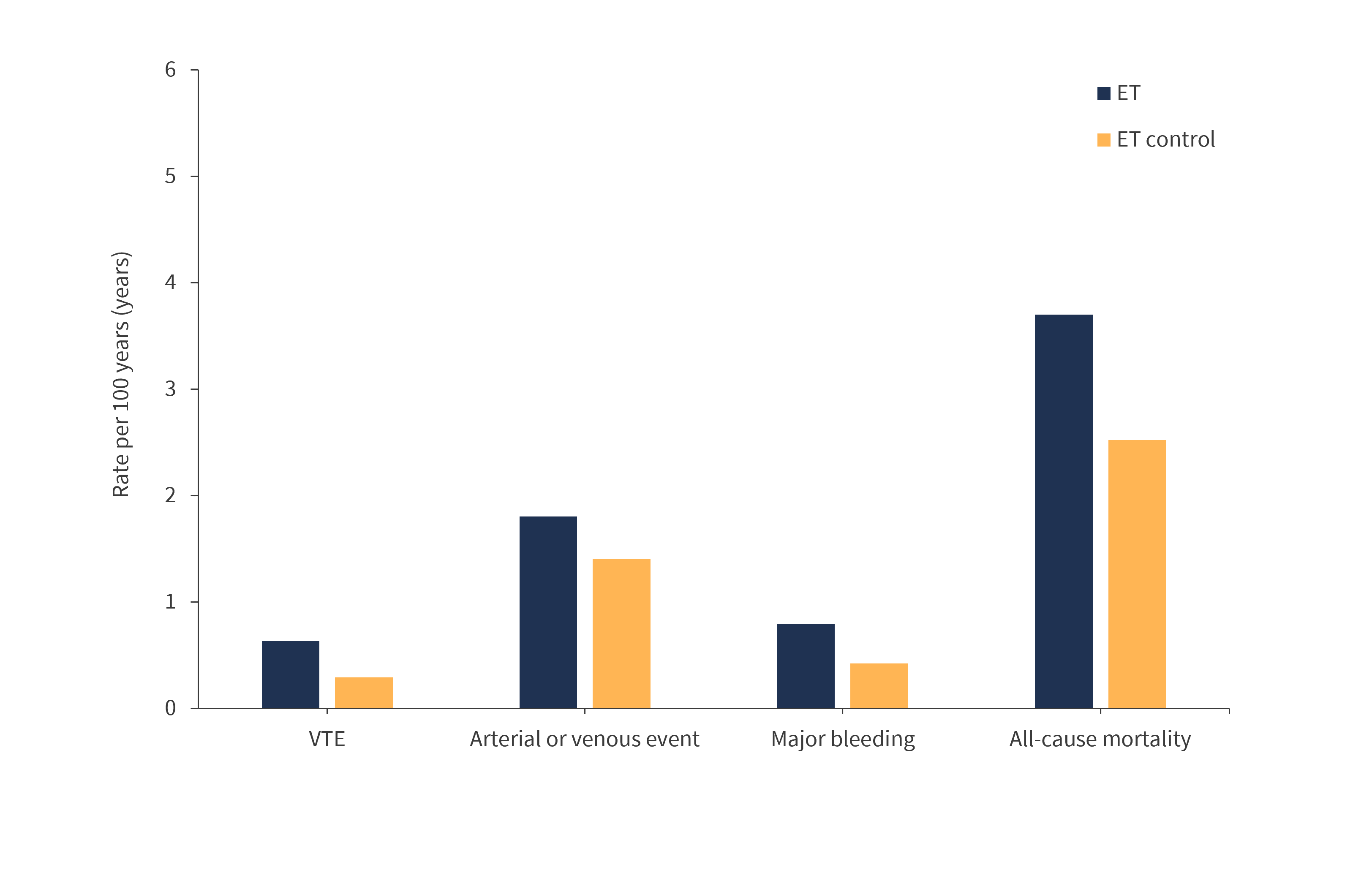All content on this site is intended for healthcare professionals only. By acknowledging this message and accessing the information on this website you are confirming that you are a Healthcare Professional. If you are a patient or carer, please visit the MPN Advocates Network.
The mpn Hub website uses a third-party service provided by Google that dynamically translates web content. Translations are machine generated, so may not be an exact or complete translation, and the mpn Hub cannot guarantee the accuracy of translated content. The mpn and its employees will not be liable for any direct, indirect, or consequential damages (even if foreseeable) resulting from use of the Google Translate feature. For further support with Google Translate, visit Google Translate Help.
The MPN Hub is an independent medical education platform, sponsored by AOP Health, GSK, Sumitomo Pharma, and supported through educational grants from Bristol Myers Squibb and Incyte. The funders are allowed no direct influence on our content. The levels of sponsorship listed are reflective of the amount of funding given. View funders.
Now you can support HCPs in making informed decisions for their patients
Your contribution helps us continuously deliver expertly curated content to HCPs worldwide. You will also have the opportunity to make a content suggestion for consideration and receive updates on the impact contributions are making to our content.
Find out more
Create an account and access these new features:
Bookmark content to read later
Select your specific areas of interest
View MPN content recommended for you
Frequency of thromboembolic and mortality events in patients with ET and PV
Thromboembolic events, including arterial and venous thromboembolic complications, are more common in patients with essential thrombocythemia (ET) and polycythemia vera (PV) than in the general population, and are associated with increased mortality and morbidity risks.1
Enblom-Larsson et al.1 performed a retrospective study investigating frequencies of thromboembolic and mortality events in a cohort of patients from the Swedish MPN register with ET or PV vs matched controls (MCs).
Study design1
- In total, 48% and 50.2% of patients with ET and PV were treated with platelet inhibitors at diagnosis vs 17.5% and 19.4% in the MC groups, respectively.
- Median age was 61.9 years and 70.4 years, and 58.6% and 50.6% were female, respectively.
- Study endpoints included:
- frequency of arterial and venous events;
- major bleeding; and
- all-cause stroke and all-cause mortality events.
Key findings
- In total, 3,141 patients with ET vs 15,705 MCs and 2,604 patients with PV vs 13,020 MCs were assessed.
- Rates of thromboembolic and mortality events were higher in patients with ET and PV vs MCs (Figure 1).
- Arterial or venous events and all-cause mortality between patients aged 60 and 70 years differed significantly, with the latter having increased risk (p < 0.001).
- Hazard ratio (HR) increased as age increased over 60 years in patients with ET and PV.
- Previous comorbidities, including ischemic heart disease and hypertension, were associated with increased risk of arterial events in patients with ET vs MCs (HR: 2.39 and 1.99) and PV vs MCs (HR: 2.09 and 1.44), respectively.
Figure 1. Rate of thromboembolic and mortality events in patients with A ET and B PV vs respective matched controls*
A

B

ET, essential thrombocythemia; PV, polycythemia vera, VTE, venous thromboembolism.
*Adapted from Enblom-Larsson A, et al.1
|
Key learnings |
|---|
|
References
Please indicate your level of agreement with the following statements:
The content was clear and easy to understand
The content addressed the learning objectives
The content was relevant to my practice
I will change my clinical practice as a result of this content


